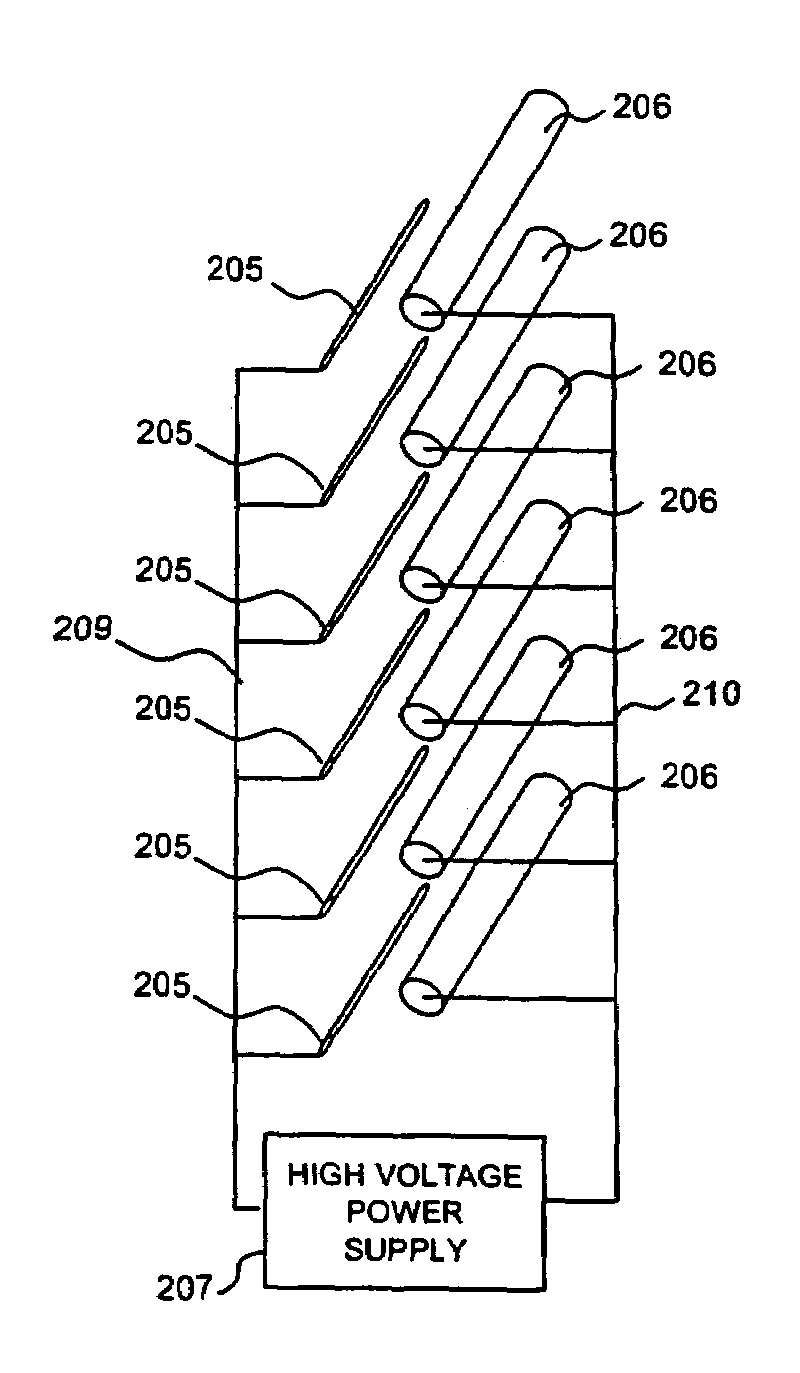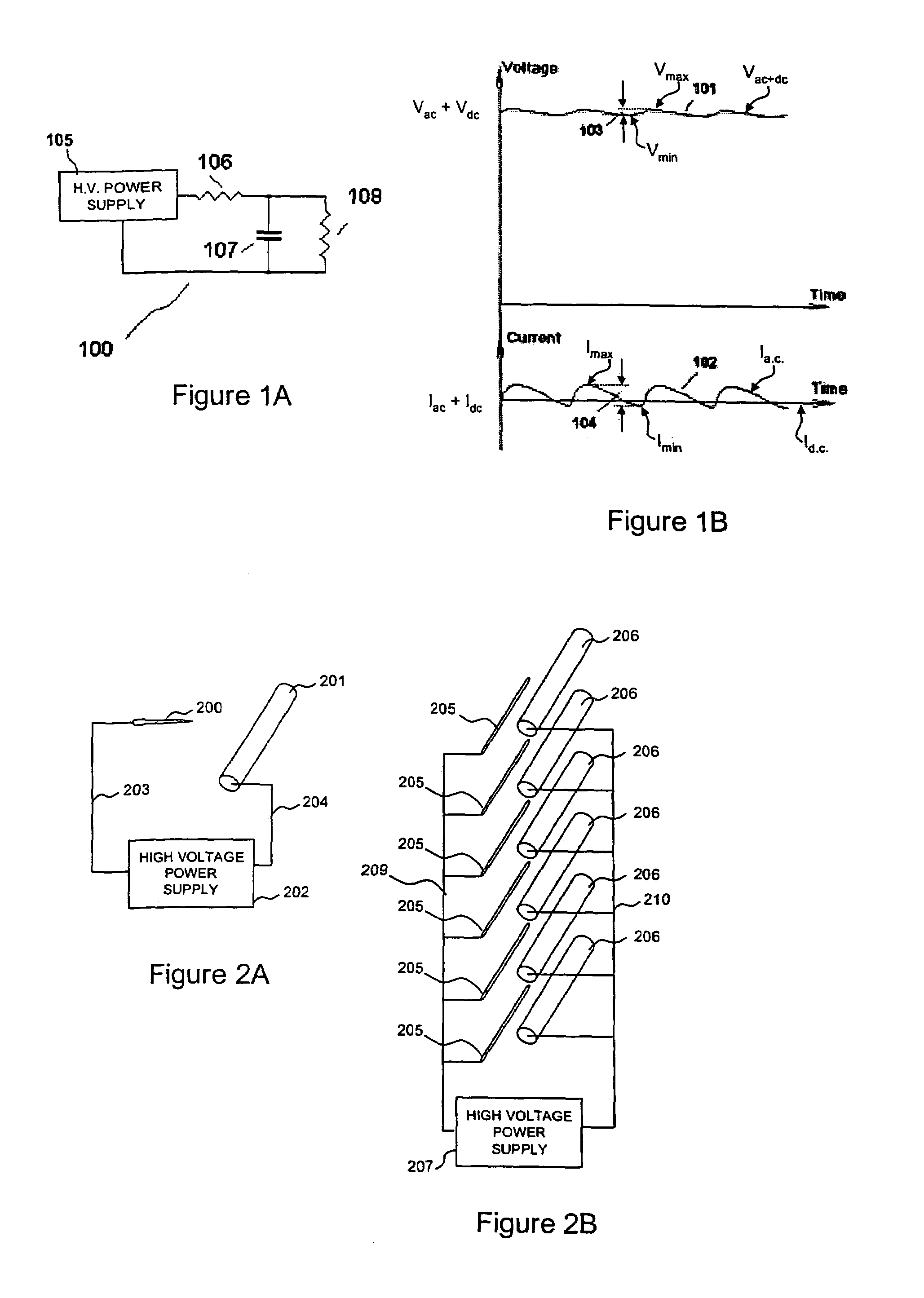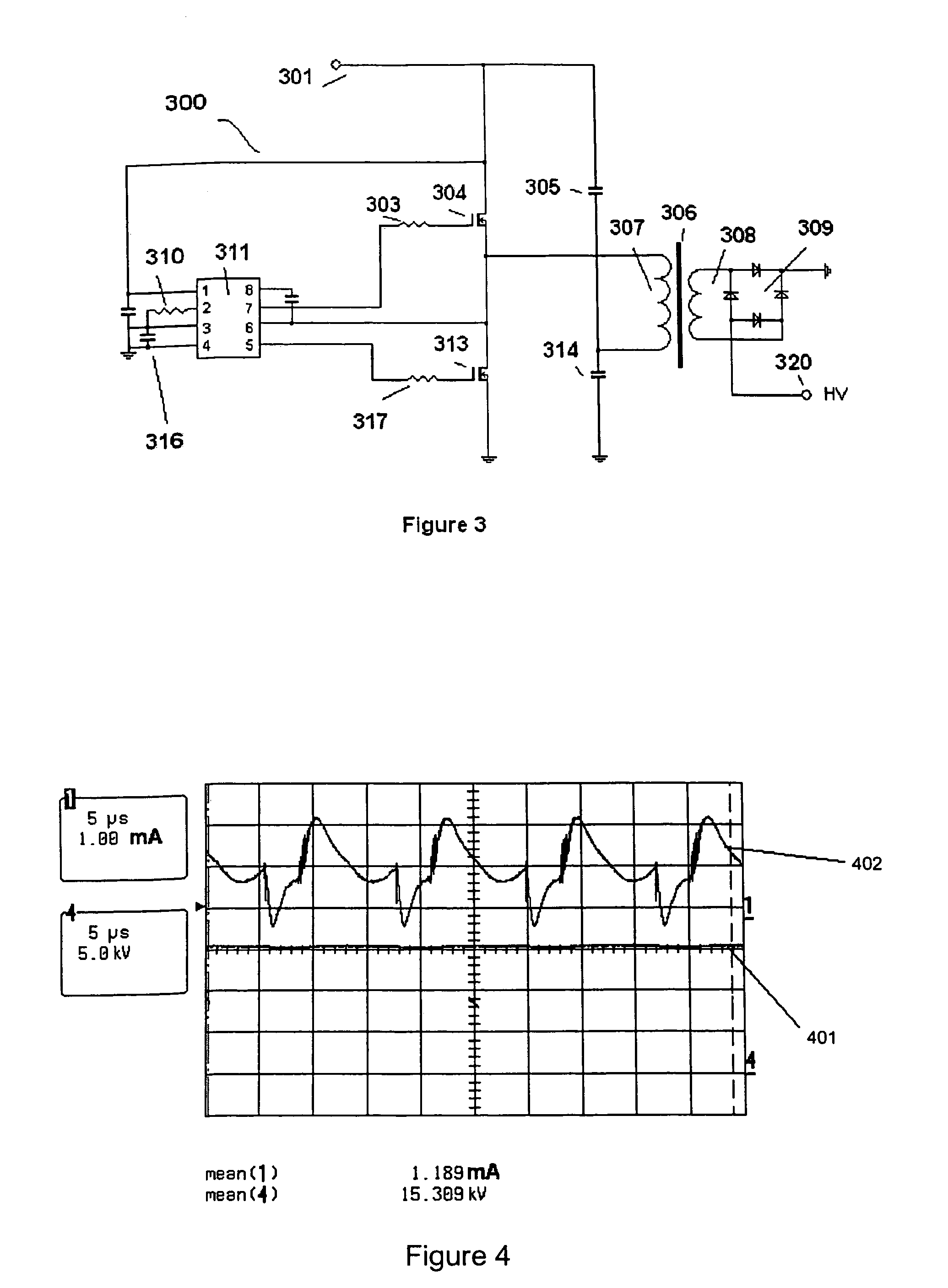Method of and apparatus for electrostatic fluid acceleration control of a fluid flow
a technology of electrostatic fluid and acceleration control, which is applied in the direction of corona discharge, electric supply techniques, transportation and packaging, etc., can solve the problems of limiting ozone production, system and method of prior art being generally incapable of producing substantial airflow, and failing to recognize or appreciate the complexity of the ion generation process. , to achieve the effect of high frequency current flow, high voltage output, and high frequency rippl
- Summary
- Abstract
- Description
- Claims
- Application Information
AI Technical Summary
Benefits of technology
Problems solved by technology
Method used
Image
Examples
Embodiment Construction
[0028]FIG. 1A is a block diagram of a power supply suitable to power a corona discharge device consistent with an embodiment of the invention. High voltage power supply (HVPS) 105 generates a power supply voltage 101 (FIG. 1B) of varying amplitude Vac+dc. Voltage 101 has superimposed on an average d.c. voltage of Vdc an a.c. or alternating component of amplitude Vac having an instantaneous value represented by the distance 103 (i.e., an alternating component of the voltage). A typical average d.c. component of the voltage 101 (Vdc) is in the range of 10 kV to 25 kV and more preferably equal to 18 kV. The ripple frequency “f” is typically around 100 kHz. It should be noted that low frequency harmonics, such as multiples of the 60 Hz commercial power line frequency including 120 Hz may be present in the voltage wave-form. The following calculation considers only the most significant harmonic, that is the highest harmonic, in this case 100 kHz. The ripples' peak-to-peak amplitude 103 (...
PUM
 Login to View More
Login to View More Abstract
Description
Claims
Application Information
 Login to View More
Login to View More - R&D
- Intellectual Property
- Life Sciences
- Materials
- Tech Scout
- Unparalleled Data Quality
- Higher Quality Content
- 60% Fewer Hallucinations
Browse by: Latest US Patents, China's latest patents, Technical Efficacy Thesaurus, Application Domain, Technology Topic, Popular Technical Reports.
© 2025 PatSnap. All rights reserved.Legal|Privacy policy|Modern Slavery Act Transparency Statement|Sitemap|About US| Contact US: help@patsnap.com



